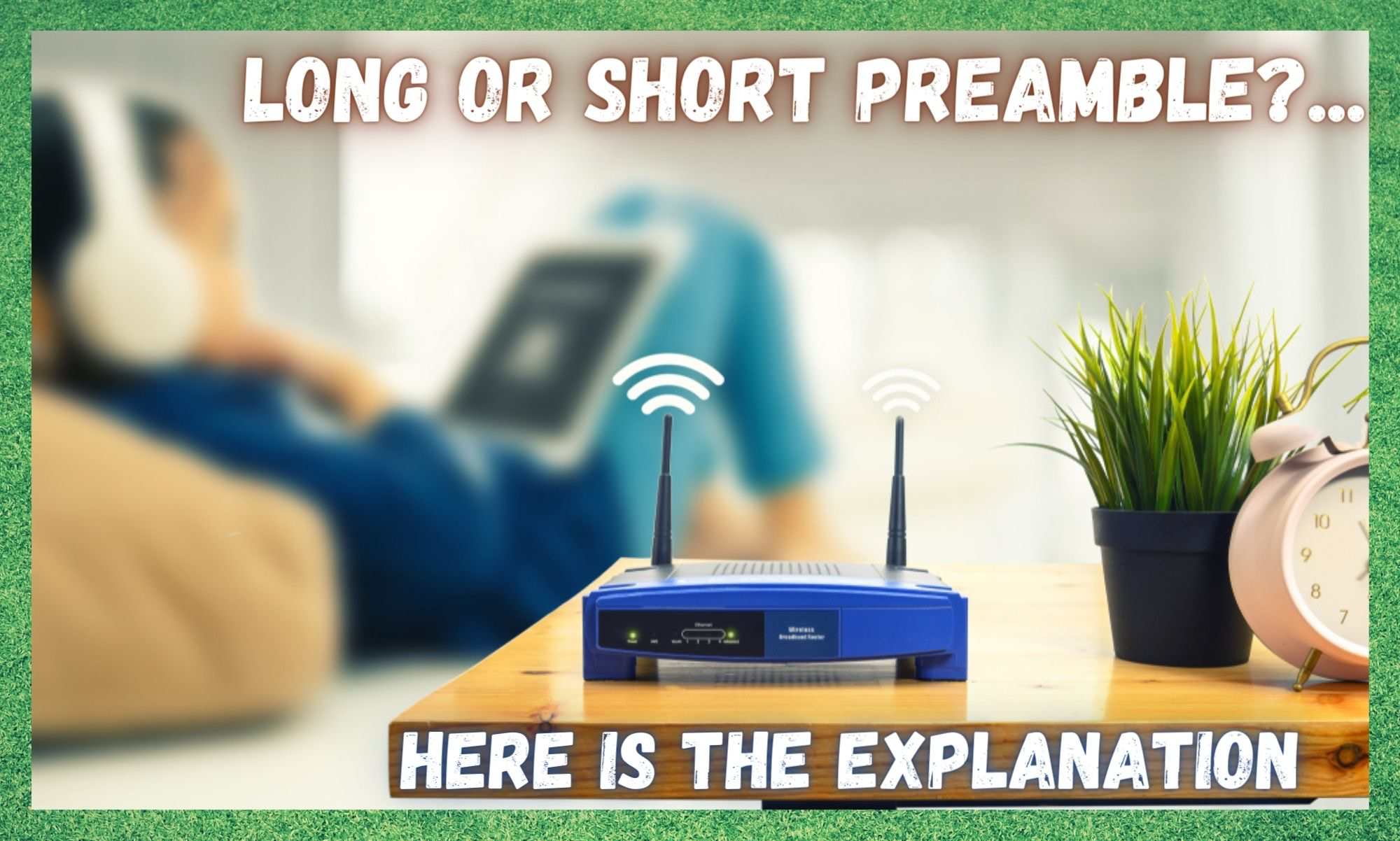
The days of internet connectivity being as simple as connecting a few wires are long gone. The online world has moved on in leaps and bounds in recent years and the Internet of Things (IoT) has seen a dramatic shift towards wireless connectivity.
This boom in wireless technology had brought with it a whole host of new technical terms and functionalities which can be used to personalize your online experience according to your own preferences.
Preamble is one such option that comes pre-loaded onto most of the routers you can get your hands on. Preamble allows you to enhance your router performance and Wi-Fi network.
This option is available on your firmware and you can optimize the settings from there. But first, let’s have a look at what preamble is and what it does so you can understand how best to apply it to your apps and devices.
Long Or Short Preamble
Preamble
Preamble is a signal transmitted to the receiver to let it know that data is on its way. Essentially, it is the first signal – part of the Physical Layer Convergence Protocol (PLCP). This basically prepares the receiver for the information that is about to be received and ensures that no information is lost.
Header is the remaining portion of data that contains a modulation scheme and its identifying information. The preamble also contains the transmission rate and the length of time to transmit an entire data frame.
There are two types of preamble that you can choose according to your preference and needs. These are accessed in your router settings. The two options are long preamble and short preamble. Let’s have a look at each of them in turn to help you decide which is right for you.
Long Preamble
Long Preamble uses longer data strings. This means the length of time it takes to transfer each string of data is longer and requires better capacity to check for errors. The total length of long preamble is a constant at 192 microseconds. This is significantly higher than the length of a short preamble.
Most routers use long preamble as their default setting as it allows connectivity to a broader range of devices, including some of the older ones that support Wi-Fi connectivity. Long preamble also provides a better and stronger signal on most devices.
If you are using your Wi-Fi network in a relatively large area and want to have the best connectivity across multiple devices, long preamble is the one for you. There are some older devices that do not support short preamble and you will need to have long preamble to connect with them.
Long preamble will also improve the transmission if the wireless signals you are receiving are weak, or are being transmitted over more distance than normal.
Some top pros and cons to summarize the Long Preamble:
Pros:
- Compatibility with a wide range of Wi-Fi devices. In fact, you can connect any device that you want over Long Preamble.
- Error checking utility as a default to reduce data losses or errors.
- Strong signal strength for larger geographical area.
Cons:
- PCLP is transmitted at 1 Mbps and that speed cannot be increased.
Short Preamble
Short preamble is a different story. It is the latest technology and is only compatible with newer devices. Having said that, you might not be able to connect your Wi-Fi router if it is set on short preamble and you have an older device that does not support short preamble type.
Short preamble is specifically designed to enhance the efficiency of your network. It improves the speed, stability and data transmission for your Wi-Fi network by a significant margin. However, there some flaws with it that are unavoidable.
Short preamble is only recommended if you have a router that is placed within the same room and you need extraordinary data transmission speeds on your existing network.
There is a margin for error as short preamble transfer time is 96 microseconds so the time for error checking capability is reduced. Short preamble can be summarized through pros and cons as follow:
Pros:
- Better speed, capped at 2 Mbps for PCLP transmission.
- Compatible with all of the latest devices.
- Enhances your overall router and Wi-Fi performance in terms of speed of the network.
Cons:
- It might not be able to connect with some of your older devices.
- The error checking capability is low due to shorter data strings
- Not efficient in areas that get interference or have low signal strength.
- Only works optimally in small geographical areas.
Optimizing the Preamble Type
Most routers sold these days come pre-loaded with the option to customize the preamble type in their firmware. All you need to do is login to the router settings and click on the advanced tab under the wireless configuration menu. Here, you will find the option to set it as long or short preamble.
If you are unsure of the setting you already have on your router, you can check it using this menu. For most routers, the default preamble type is set to long as the manufacturers want to have the best connectivity and compatibility with the most devices possible. However, you can change it if you wish to.
Bottom Line
Now, you have a fair idea about what each of these types is and what features they include. You can choose the best preamble type according to your device, the placement of your router and your data transmission needs. If you are using Wi-Fi on multiple devices and want to have the best connectivity, go with long preamble type.
However, if your main concern is speed and your Wi-Fi router is in the same room as your device, the short preamble option will make sure you get the best possible speed on your device.

